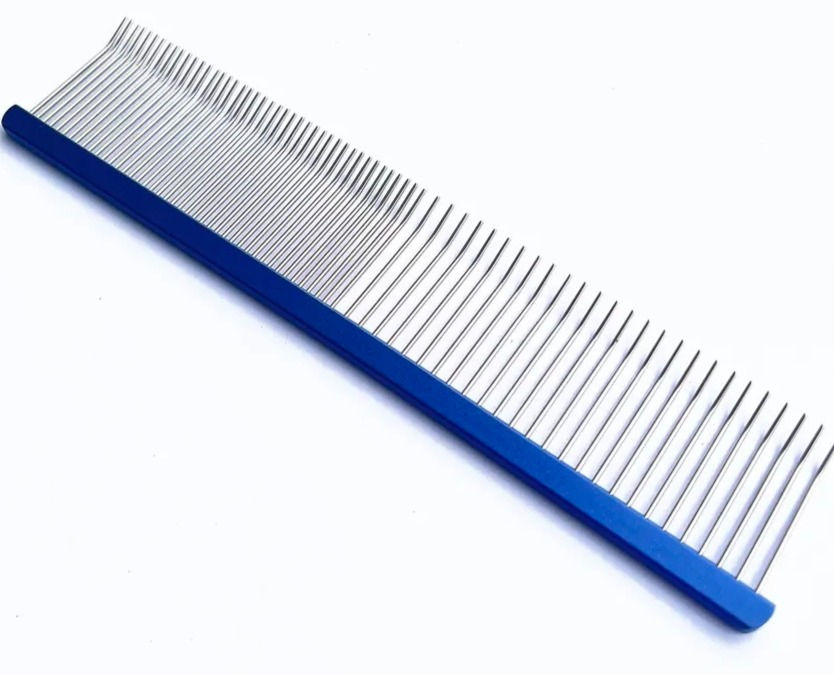Why Deshedding Is Essential for Your Dog's Health
- Jul 22, 2023
- 3 min read
Updated: Jul 15, 2024
One of the most common reasons a pet parent visits their groomer is for clipping and trimming. Whether it's a new puppy or a dog with lots of hair, brushing is extremely important to maintain your dog's health. While you may think that brushing and deshedding takes away your valuable time, let us explain why deshedding is essential for your dog's heath.

For many dog owners, deshedding and coat care is more than just a chore. It's not just about keeping your floors clean and your sofa free of dog hair—it's also about making sure that your pup is healthy and happy.
It may seem like brushing is just a way to keep your dog clean and prevent shedding, but there are other benefits to regular brushing.
Brushing can help remove dirt and dead skin cells. This will help your dog's skin stay healthy and looking good.

Deshedding can also help reduce the amount of dander that is released into the air by your dog's skin. Dander is what causes allergies and other health problems in people who have dogs in their home, so this is a big benefit of brushing!
Why deshedding is essential for your Dog's Health.
So let’s look into more about deshedding, many if not most dog breeds shed. Dogs naturally lose old or damaged hair by shedding. Although shedding is a normal process for dogs, the amount and frequency of hair that is shed often depends upon their health and breed type. It can also depend on the season as many dogs develop thick coats in the winter that are then shed in the spring.
A dog’s natural coat is made up of two layers: an outer layer and an undercoat. The undercoat tends to be short and dense, while the outer layer is longer and less dense. When a dog sheds, their hair falls out in clumps or strands. Some dogs shed more than others; for example some dogs shed twice a year while others shed all year round!
The third reason is that grooming your pet regularly helps prevent matting, which can lead to skin problems such as infections or allergies if left untreated for too long!
Recommended solutions for deshedding your dog.
The undercoat of a dog is made up of dead hairs. The main purpose of deshedding is to remove the dead undercoat, which would otherwise just sit there and cause matting. A regular de-shed treatment with a good shampoo, such as the Clipit De-Shed will keep your dog’s coat soft and shiny, and it will also help prevent skin problems.

In order to get rid of the dead undercoat, you need to brush or comb your dog regularly. This will not only make them look better but it will also help prevent matting and other skin problems like hot spots or skin infections.
Here are some tools that can help de-shed a coat quickly:
A high-velocity blaster/dryer.
De-shedding rakes.
Rubber glove.
Metal comb.
Stripping knife.
Using a high-velocity blaster/dryer directed to the skin, helps lift the dead undercoat. This should be done while the dog is in the bath so it keeps all the loose hair in there.
Rakes that have curved teeth, work wonders for removing loose coat.
Rubber gloves have shown that they cut your time by half when grooming and bathing, so no need for brushes, curry combs and de-shedding rakes.
Designed specifically for long and thick coats, featuring angled teeth that are perfect for detangling, lifting and styling.
A smooth metal blade stripping knife is an easy to use tool, ideal for taking off coarse hair.
Dogs are meant to shed, but excessive shedding can be an indicator of a health issue that needs to be addressed.
Your dog’s coat is more than just a way for them to show off. It’s also a great indicator of how their health is doing, and their general state of well-being.
If your dog’s coat is dull or shedding excessively, it could be something to take into consideration and may even need veterinary attention.
As a natural defence against the elements and a means for temperature regulation, a dog’s coat is arguably one of their most important attributes.
The moral of the story, is to keep your pet's skin healthy. Brushing not only helps with that, but it also allows for easier brushing and combing if you have a dog that has long hair or thick a thick coat. There are many different types of brushes on the market, and you should definitely find one that best works for your dog and their coat type.






Comments